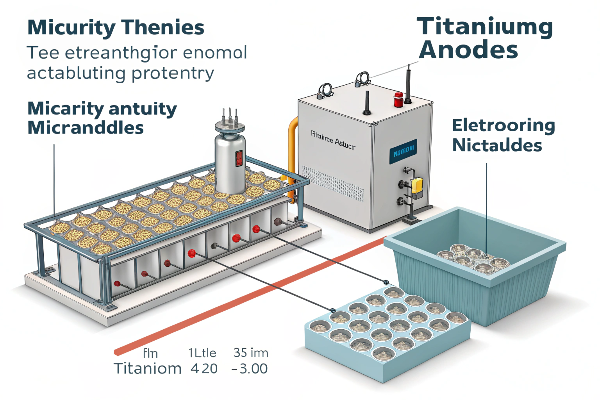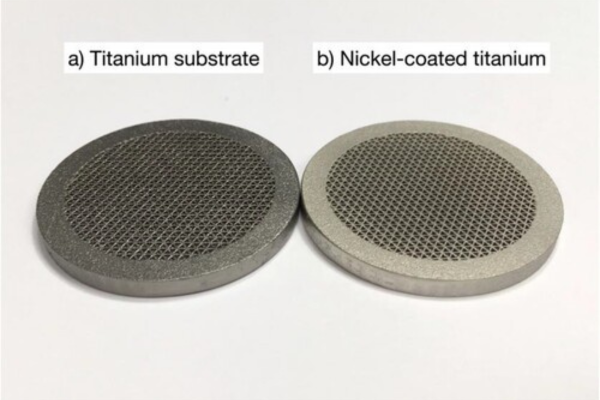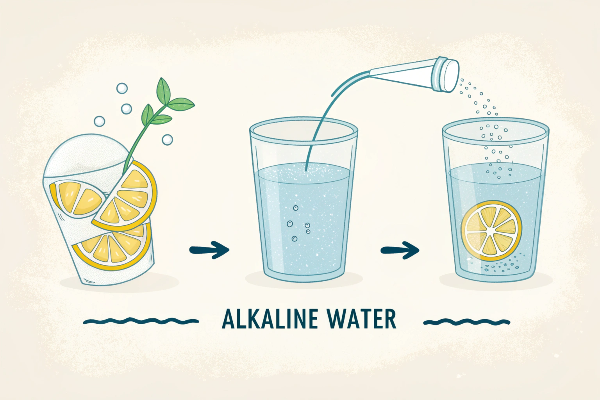Experiencing uneven plating on complex shapes? It’s a common headache, leading to wasted materials and compromised product quality.
Titanium anodes are essential for uniform electroplating, especially with complex shapes. By optimizing current density and using techniques like auxiliary anodes or simulation software, you can achieve consistent plating thickness, even in micro-holes.

This article dives deep into optimizing titanium anodes for superior electroplating results, covering everything from current density to maintenance. Let’s explore!
How to optimize current density distribution using titanium anodes for complex-shaped parts?
Struggling with uneven plating on intricate parts? The edges get too much, the recesses not enough. It’s a current density problem.
Optimizing current density with titanium anodes involves using tools like auxiliary anodes, shielding, or 3D simulation software1. These techniques help distribute the current evenly across complex geometries, improving plating uniformity.2

Diving Deeper into Current Density Optimization
Current density distribution is the key factor controlling the uniformity of electroplated coatings. Complex shapes cause variations, leading to issues:
- Edge Effect: Higher current density at edges and corners, resulting in thicker deposits.
- Tip Discharge: Sharp points attract excessive current, leading to burning or nodule formation.
- Faraday Cage Effect: Recessed areas receive lower current density.
Here are several approaches to tackle these challenges:
| Method | Description | Advantages | Disadvantages |
|---|---|---|---|
| Auxiliary Anodes | Strategically placed smaller anodes to redirect current towards low-current density areas. | Improved uniformity in recesses and complex geometries. | Requires careful design and positioning; may increase complexity. |
| Shielding/Thieves | Non-conductive barriers or conductive "thieves" used to block or redirect excessive current from high-current density areas. | Prevents overplating on edges and corners. | Can be challenging to design and implement for very intricate shapes. |
| 3D Simulation Software | Software that models the electric field and current distribution, allowing for optimization of anode placement, shielding, and other parameters before actual plating. | Predicts plating thickness distribution; enables virtual prototyping. | Requires expertise in software usage and may involve computational costs. |
| Pulse Plating | Applying current in pulses rather than continuously. The "off" time allows for redistribution of ions, leading to more uniform deposition, especially in micro-holes and recesses. | Improved uniformity, finer grain structure, better micro-hole filling. | May require specialized equipment and careful optimization of pulse parameters. |
Can titanium anode coatings be tailored to enhance specific plating bath performance (e.g., brighteners, levelers)?
Frustrated with dull or uneven plating, even with additives? It is not just about the bath; your anode plays a crucial role.
Yes, titanium anode coatings3 can be customized to work better with specific plating bath additives4. The coating’s formulation can be modified to improve interaction with brighteners and levelers. This leads to enhanced brightness, leveling, and overall plating quality.2

Diving Deeper into Anode-Additive Synergy
Electroplating baths often contain organic additives:
- Brighteners: Produce a bright, reflective finish.
- Levelers: Promote uniform plating thickness across the surface, even on rough or uneven substrates.
- Wetting Agents: Reduce surface tension, improving solution penetration into small features.
The anode’s surface can interact with these additives:
| Interaction | Effect | Optimization Strategy |
|---|---|---|
| Catalytic Decomposition | Anode surface can catalyze the breakdown of additives, reducing their effectiveness. | Choose coatings with low catalytic activity for the specific additives used. |
| Adsorption/Desorption | Additives may adsorb onto the anode surface, affecting its performance. | Tailor the coating to have controlled adsorption/desorption properties for optimal additive function. |
| Electrochemical Regeneration | Some additives can be electrochemically regenerated at the anode, prolonging their lifespan and effectiveness. | Design coatings that promote the desired regeneration reactions, enhancing additive stability and reducing consumption. |
| Co-Deposition (Undesirable) | Additives or their breakdown products can co-deposit with the metal, leading to undesirable coating properties. | Select coatings that minimize co-deposition or use pulsed current to control the incorporation of additives into the plated layer. |
What are the best practices for cleaning and maintaining titanium anodes in high-volume electroplating lines?
Concerned about anode maintenance costs and downtime in your plating operation? Keeping anodes clean is a significant challenge.
Regular cleaning is crucial for titanium anode performance. Common methods include acid cleaning2 and ultrasonic cleaning5. It’s also important to avoid mechanical damage, and inline monitoring systems help assess anode passivation.2

Diving Deeper into Anode Maintenance
Titanium anodes, while durable, require regular maintenance:
- Passivation: A natural oxide layer forms on the titanium, increasing resistance and reducing efficiency.
- Contamination: Plating baths can accumulate impurities that deposit on the anode, hindering performance.
- Coating Degradation: The active coating can gradually wear or dissolve over time, especially in aggressive electrolytes.
| Cleaning Method | Description | Advantages | Disadvantages |
|---|---|---|---|
| Acid Cleaning | Immersion in dilute acid (e.g., hydrochloric, sulfuric) to remove oxide layers and some contaminants. | Effective for removing passivation. | Can be corrosive to the anode coating if not done carefully; requires proper waste disposal. |
| Ultrasonic Cleaning | Using high-frequency sound waves to create cavitation bubbles that dislodge contaminants from the surface. | Effective for removing particulate matter and some organic contaminants; less aggressive than acid. | May not be effective for removing strongly adhered passivation layers; can be time-consuming. |
| Mechanical Cleaning | Brushing or scrubbing the anode surface. | Can remove stubborn deposits. | Risk of damaging the coating; not recommended for delicate anode structures or coated anodes. |
| Electrochemical Cleaning | Applying a reverse current or a specific cleaning solution to electrochemically remove contaminants. | Can be very effective; can be tailored to specific contaminants. | Requires specialized equipment and careful control of parameters; may not be suitable for all anode types. |
Preventive Maintenance:
- Regular visual inspection for signs of damage or excessive buildup.
- Monitoring cell voltage and current for any deviations from normal operating parameters.
- Periodic testing of anode activity and coating integrity.
How does titanium anode geometry (mesh, plate, tubular) affect throwing power and micro-hole penetration?
Having trouble plating deep holes or small features evenly? Anode shape significantly impacts the results. It is about current distribution6.
Different anode geometries have different current distribution properties. Mesh anodes generally offer better throwing power and micro-hole penetration compared to plate anodes. Tubular anodes have specific advantages in certain applications.

Diving Deeper into Anode Geometry and Throwing Power
Throwing power is the ability of a plating bath to produce a uniform coating thickness on parts with complex shapes, including recesses, holes, and other features.
| Anode Geometry | Current Distribution | Throwing Power7 | Typical Applications |
|---|---|---|---|
| Mesh | More uniform current distribution due to the open structure, allowing better penetration into recesses. | Generally higher, especially for complex shapes and micro-holes. | PCBs, connectors, decorative plating, parts with intricate geometries. |
| Plate | Less uniform current distribution, with higher current density at edges. | Lower, especially for recessed areas. | Simple, flat parts; applications where high throwing power is not critical. |
| Tubular | Current distribution depends on the tube diameter and spacing; can be designed for specific applications. | Can be high for specific applications, such as plating the inside of cylinders. | Internal plating of pipes or cylinders; specialized applications requiring uniform radial current distribution. |
| Expanded Metal | Similar to Mesh, offering good open area. | Good throwing power, often better than solid plates | General-purpose plating, provides balance between cost and uniformity |
Are there any emerging titanium anode technologies (e.g., 3D-printed anodes) that improve electroplating efficiency?
Looking for the next big thing in electroplating? Wondering if there’s a way to boost efficiency and quality beyond traditional methods?
Yes, emerging technologies like 3D-printed titanium anodes and nanostructured coatings show promise. These innovations can improve current distribution, reduce overpotential, and enhance overall plating performance.

Diving Deeper into Emerging Anode Technologies
- 3D-Printed Titanium Anodes8:
- Allows for the creation of complex, customized anode geometries that were previously impossible to manufacture.
- Enables precise control over current distribution, optimizing plating uniformity and efficiency.
- Can be designed with internal channels for improved electrolyte flow and gas release.
- Nanostructured Coatings9:
- Coatings with nanoscale features (e.g., nanoparticles, nanowires) can significantly increase the surface area of the anode.
- Higher surface area leads to lower current density at the anode surface, reducing overpotential and energy consumption.
- Nanostructured coatings can also enhance the catalytic activity of the anode, improving plating efficiency and deposit properties.
- Composite Anodes10
- Combining titanium with other materials.
- Enhanced properties not achievable with single-material components.
These technologies are still in the early stages of commercialization but hold great potential for revolutionizing electroplating.
Conclusion
Titanium anodes are more than just inert electrodes; they’re crucial for achieving uniform, high-quality plating. By optimizing current distribution, tailoring coatings, and employing proper maintenance, you can unlock their full potential. Explore emerging technologies like 3D printing for even greater efficiency.
-
3D simulation software can revolutionize your plating process by predicting outcomes. Learn more about its advantages and applications here. ↩
-
Learn about acid cleaning techniques and their benefits for titanium anodes, crucial for maintaining efficiency in plating operations. ↩ ↩ ↩ ↩
-
Explore how tailored titanium anode coatings can enhance your electroplating process and improve results. ↩
-
Learn about effective plating bath additives that can work synergistically with anode coatings for superior finishes. ↩
-
Discover the benefits of ultrasonic cleaning for titanium anodes, a method that can enhance cleaning efficiency without damaging the surface. ↩
-
Current distribution is key to successful electroplating. Learn how it influences the quality of your plating results. ↩
-
Understanding throwing power is crucial for achieving uniform coatings in complex shapes. Explore this link to enhance your plating knowledge. ↩
-
Discover how 3D-printed titanium anodes can revolutionize electroplating efficiency and quality with their unique designs. ↩
-
Learn about the advantages of nanostructured coatings in enhancing anode performance and reducing energy consumption. ↩
-
Explore the benefits of composite anodes and how they can enhance electroplating properties beyond traditional materials. ↩





